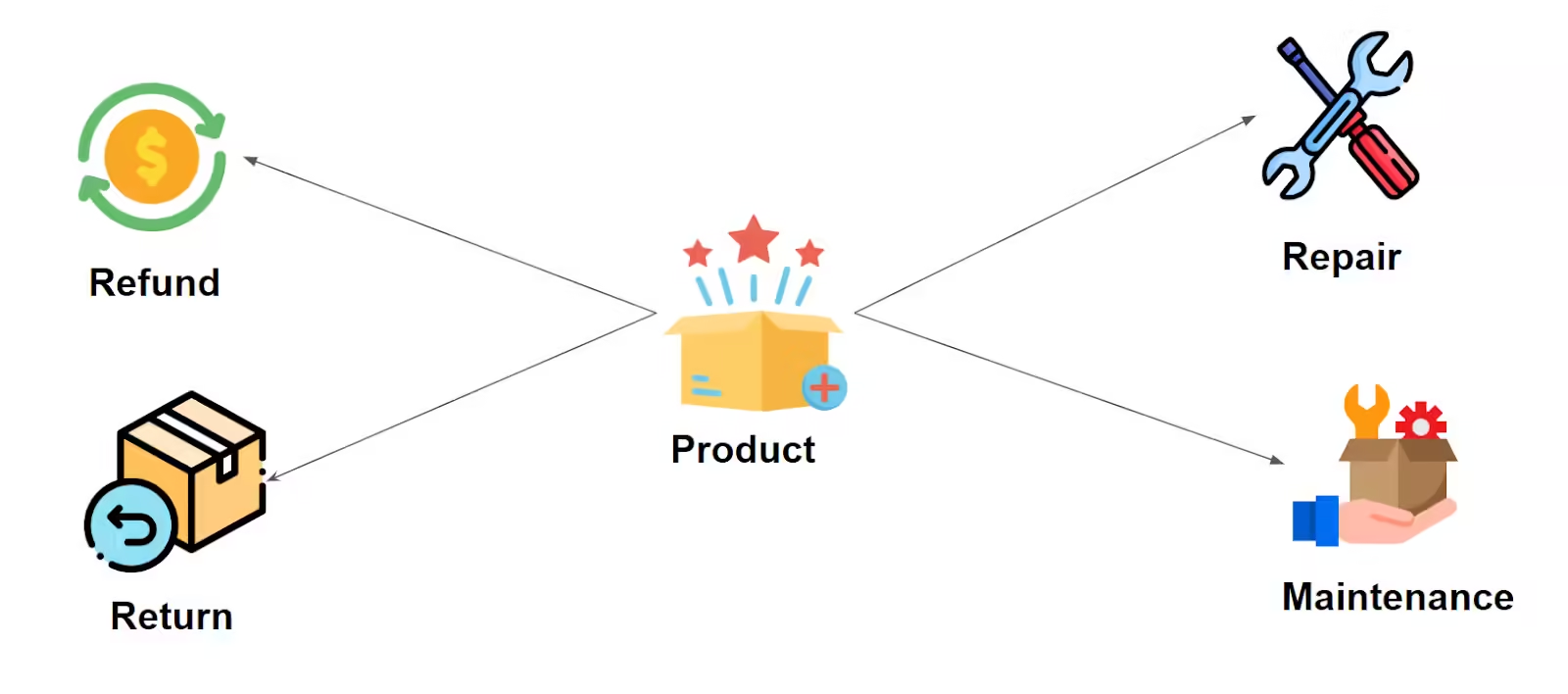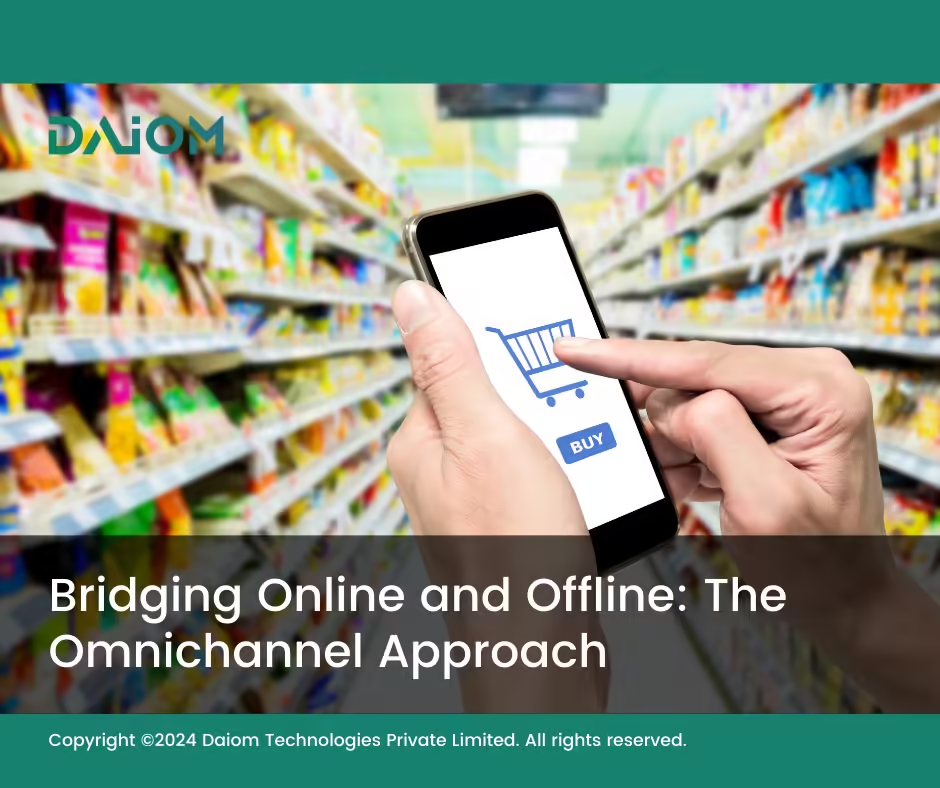In the future, every business will be omnichannel. No longer will companies be purely online or strictly offline—those lines are already blurring.
Omni channel/Phygital market will be $55 Billion by 2027 from $11 Billion currently.
At the same time, digital-first giants like Amazon have ventured into physical retail, opening stores to offer in-person experiences.
It’s a shift that reflects the changing nature of how consumers shop and interact with brands.
This blend of online and offline is what omnichannel is all about—meeting customers wherever they are and offering a seamless experience across every platform. It’s not just a trend; it’s becoming a necessity for businesses looking to stay relevant and competitive.
Also Read Our Blog – Offline Vs Online: No More A Choice!
Why is this shift so crucial?
Today’s consumers live in both worlds.
They spend an average of 6.5 hours online daily, with 2.5 of those hours on social media. But while they browse and discover online, many still crave the tactile experience of in-store shopping.
These numbers highlight a key reality: businesses must master both digital and physical touchpoints to stay competitive.
This makes omnichannel marketing more important than ever.
It answers the key questions –
- How can businesses effectively integrate online and offline experiences?
- What strategies can enhance customer engagement across platforms?
- How do brands measure success in an omnichannel approach?
Throughout this blog, we’ll explore the actionable strategies to ensure you’re ready for this omnichannel future.
Winning in an omnichannel world demands excelling in all channels, from in-person to hybrid, inside sales, digital self-serve, and marketplaces—especially during uncertain economic times in which a poor customer experience may lead to a lost sale.
McKinsey & Company
Table of Contents
1. How is Omnichannel Different From Multichannel?
While both Omnichannel and Multichannel approaches involve being present on various platforms, Omnichannel integrates all the channels for a smoother customer experience.
Multichannel might have separate teams handling in-store and online sales, whereas Omnichannel ensures that all work together.

Why Does This Matter?
This integration of multichannel and omnichannel allows companies to collect unified customer data, analyze preferences, and offer personalized experiences.
For example, if a customer looks at a product online but buys it in-store, an Omnichannel strategy helps the brand understand that journey and improve their marketing efforts accordingly.
2. Key Aspects of Omnichannel
The way Omnichannel is viewed can vary.
If you talk to a marketing expert, they’ll focus on marketing channels. Sales professionals might highlight sales channels. But Omnichannel goes beyond that—it has three key aspects:

- Omnichannel Marketing: Promoting your brand across different channels so customers get a consistent message everywhere, like on social media, websites, and in-store.
- Omnichannel Sales: Distributing the brand presence across multiple platforms, ensuring customers can buy from wherever they feel most comfortable, whether online or in-store.
- Omnichannel Service: Providing customer support seamlessly across all channels, so customers get the same help and care whether they contact you online, through an app, or in person.
3. Omnichannel Sales
Imagine offering your customers a seamless shopping experience across physical stores, apps, websites, and online marketplaces. That’s the power of distribution.
Omnichannel sales revolve around a brand’s ability to distribute its presence across multiple platforms—physical stores, apps, websites, and online marketplaces. It’s all about making sure customers have the flexibility to shop wherever they feel most comfortable.
As a result, businesses can maximize their visibility and provide a seamless purchasing journey across all channels.
With the market set to skyrocket from $11 billion to $55 billion by 2027, adapting to this shift is non-negotiable. Here’s why it is important:

- Boost Sales: Meet customers where they are, online and offline, for increased conversion.
- Elevate Customer Experience: Keep their journey smooth from screen to store.
- Leverage Data: Use insights to deliver personalized marketing.
- Manage Inventory Better: Get the right product to the right place, every time.
By focusing on omnichannel sales, businesses can boost brand loyalty and adapt to evolving shopping habits—just like Mamaearth has done.
Mamaearth
Mamaearth uses an omnichannel sales approach to make shopping easy for everyone. They have a presence on different platforms, like online stores, physical shops, and social media, so customers can buy their products wherever they feel comfortable.
This approach helps Mamaearth meet what customers want, making shopping convenient and helping sales grow. It’s an important part of their plan for steady growth, as they make sure their sales channels fit the needs and habits of their customers.

4. Omnichannel Marketing
Omnichannel marketing means being present and consistent across multiple channels. It includes everything from digital ads and social media to traditional media like TV and newspapers.
Omnichannel marketing is about connecting with customers on their terms, empowering them to engage with your brand seamlessly across all channels.
Scott Brinker
There are only 7% of the customer who just prefer shopping online and only 20% of them are only store only shoppers.
While 73% of the customers use multiple channels throughout the customer journey.
The goal is to reach customers wherever they are, keeping the brand message consistent and easy to recognize.
Brands that excel in this use various tactics:
- Retention Marketing: Using WhatsApp, SMS, and email to keep in touch with existing customers.
- Social Media & Influencer Marketing: Engaging customers on platforms like Instagram and YouTube.
- Local SEO: Optimizing for searches like “store near me” to drive local foot traffic.
Here are a few real-life examples of how brands use omnichannel marketing to reach their customers:

- Sleep Company: They use a WhatsApp store locator to help customers find their nearest store easily, whether they’re browsing on the website or through Instagram. This simple tool not only makes it easy for customers to find stores but also boosts the number of leads and increases visits to their physical stores.
- Lenskart: They regularly work with influencers who create videos showcasing what it’s like to visit a Lenskart store and the different glasses available. These videos are a great way to reach new customers, giving them a glimpse of the store experience and encouraging them to visit in person.
- CaratLane: For CaratLane, Google ratings and reviews are super important. They make sure their customers are happy and encourage them to leave positive reviews. This helps people discover their stores online and drives more foot traffic to their locations.
5. Omnichannel Service
One of the most overlooked aspects of Omnichannel is servicing. Servicing is often associated with the Sales Channel. But, Omnichannel Strategy is all about breaking this Linkage. It’s not just about where customers buy—it’s also about how they get support.

Good Omnichannel service means customers can buy a product online and get it serviced or returned at a physical store, or vice versa. This flexibility builds trust and loyalty.
Decathlon and GIVA are great examples of brands that make this seamless servicing possible:

Decathlon: Imagine you bought a bike from Decathlon—whether online or from a specific store doesn’t matter. If that bike needs a tune-up or repair, you can walk into any Decathlon store, and they’ll take care of it for you. They offer different levels of servicing packages like Tune Up, Standard, and Premium, ensuring your bike is always in top shape. Plus, they even offer a pick-up and drop-off service for extra convenience. It’s all about making sure you get the support you need, no matter how or where you originally bought your bike.
GIVA: Now, let’s talk about GIVA. Say you buy a beautiful necklace from them, either online or at a store. Over time, the piece might lose a bit of its shine. GIVA’s got you covered with their free lifetime plating service. This means you can visit any GIVA store, and they’ll bring back that sparkle for free, no matter where you bought the piece. It’s their way of saying, “We’ll keep your jewelry looking amazing, whenever and wherever you need it.” This ensures that every customer enjoys the same level of care and service, regardless of the channel they used for their purchase.
6. The Role of Technology in Omnichannel
Tech is a big enabler of Omnichannel strategies. It helps track customer behavior, analyze data, and deliver personalized experiences. Here’s how it plays a part:
- Retail POS Systems: Technology ensures smooth transactions at the point of sale, making in-store purchases fast and efficient.
- Footfall Measurement: Track store visits to understand customer traffic patterns and improve store layouts.
- Location Insights: Gain a better understanding of customer behavior and preferences based on where they shop and move within the store.
- Lead Capture and Management Tools: Streamline the process of converting visitors into loyal customers, capturing valuable data that helps with follow-ups.
- Inventory Analytics and Security: Use store inventory analytics to manage stock levels efficiently and deploy tracking to reduce loss.
7. Omnichannel for Different Sectors
Omnichannel isn’t limited to retail; it spans across multiple sectors, including healthcare, banking, education, and more:

- Education: Take an educational brand like Physics Wallah. They offer online classes, but they also have physical centers where students can learn in person. This way, students can choose how they want to learn—whether it’s through online videos or sitting in a classroom.
- Healthcare: In the healthcare sector, providers like clinics and hospitals use omnichannel strategies by offering telehealth services alongside traditional in-person consultations. Patients can book appointments online, access medical records via apps, and receive follow-up care through phone calls, enhancing their overall experience.
- Banking: Financial institutions have adopted omnichannel strategies by allowing customers to manage their accounts through mobile apps, websites, and in-person branches. Customers can deposit checks using their smartphones, transfer money online, or visit a branch for personalized assistance.
- Nonprofits: Nonprofits are using omnichannel methods to connect with their supporters. They reach out through social media, email newsletters, and in-person events. This helps them engage with donors and volunteers, building a strong community around their cause.
So, whether it’s education, healthcare, banking, or nonprofits, the omnichannel approach makes it easier for people to interact with organizations in the way that suits them best!
8. Conclusion
As the market evolves, customers expect brands to adapt to their needs. Omnichannel isn’t just a trend—it’s a necessity for modern businesses.
Whether through online platforms, physical stores, or customer service, creating a unified experience across all channels is what will keep customers coming back.
By focusing on Omnichannel sales, marketing, and service, brands can ensure that every customer has a smooth, satisfying experience—no matter where they choose to engage.
As more brands embrace this approach, it’s clear that Omnichannel is the way forward for businesses looking to grow and thrive in today’s competitive landscape.
Also read our blog – The Power of Omni Channel: Helping Businesses Connect with Customers


